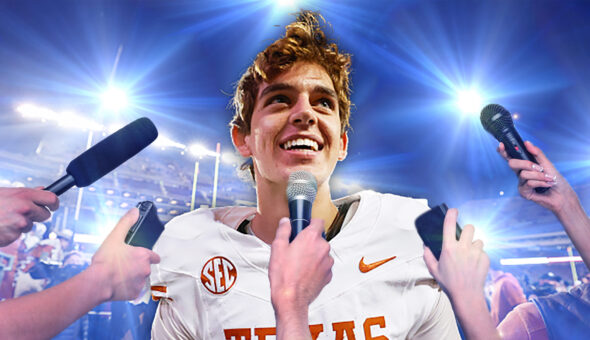Two recent topics in higher education — declining enrollments and the American public’s declining trust in higher education — are hitting educational institutions hard. They pose a conundrum for leaders, who need to recruit more students — and students who can thrive at their schools — while working to restore trust in colleges and universities. Can affiliate marketing be part of the solution for higher education?
Higher education marketers need to use every method to find the right students to fill their incoming classes, and affiliate marketing could identify a new set of prospects. Brands like Adidas have programs for student affiliate marketers to earn money, so will a growing acceptance of affiliate marketing allow colleges to use this additional source of leads while maintaining and even improving their reputations?
Digital marketing for universities is a fast-moving field, and navigating the complexities alongside shrinking budgets makes it necessary to find affordable methods to locate and nurture students. Privacy and consumer protection regulations are concerns, but affiliate marketing may pose no more difficulty than other digital marketing tactics.
What is Affiliate Marketing?
Affiliate marketing for higher education is one form of lead generation in which prospective students can fill out a form to be contacted by a university representative. Specifically, “affiliate” sites — sometimes called media partners — gather information to be sold to aggregators or colleges directly.
You’re likely familiar with affiliate marketing for products, where a blog post or article recommends — or even just mentions — a specific vacuum cleaner model, for instance. There are links to where you can buy that vacuum on Amazon and other websites. When you click the link, the website on which you read about the appliance gets a commission.
For colleges and universities, the process is similar, with many websites publishing articles and guides about higher education offering students either a click-through link to an enrollment landing page for a particular college, or to sign up to search for colleges that match their interests and preferences. These leads from affiliate sites can augment other strategies for enrollment marketing professionals to gather potential future students.
This article refers to affiliate lead-gen for accredited degree-granting higher education institutions, not platforms that sell online professional courses, such as LinkedIn Learning or Udemy. Complex and varied business relationships exist between some higher education institutions and the affiliate sites and programs. However, we are looking at affiliate leads as an additional way for colleges and specific academic programs to broaden their digital marketing sources.
Does it Work?
According to Chris Roberts, general manager at CloudControlMedia and a veteran in the EDU space, “Any time that there’s a hard-to-reach grad program, online expansion, or the school has maxed out its Google non-brand and social spend, and there’s a provider that can get addition traffic, this is a very good channel for their purposes.”
In his experience, organic affiliate leads consistently convert to enrollments at about 3-5%, about the same as organic non-institution brand leads through Google.
Pat Murphy, founder and CEO of LeadScorz, estimates the typical conversion rates for standard form-submit affiliate leads for EDU at 1-3%. He noted that a college’s intent when using filtered affiliate leads is “to fill the top of their admissions funnel with higher intent and higher-quality leads.” He agrees that affiliate leads are a valuable way to augment a university’s organically generated leads to fill its pipeline of enrollment prospects.
Murphy continued, “Using AI-based predictive modeling is a cost-effective method of differentiating adult leads.”
Tips for Colleges Looking to Use Affiliate Marketing
Successful affiliate marketing requires a high level of digital sophistication and capability, so working with an agency that understands the whole ecosystem is crucial for colleges taking this route. Matching your student profiles with appropriate leads or collaborating with effective affiliate partners is complex.
According to Murphy, “To up your conversion rate, you’ve got to have qualified leads. And that requires a lot of data gathering that most colleges are not prepared to do on their own.”
“If you are not filtering affiliate leads, you’re spending money you don’t need to,” he said.
Colleges need to narrow down the pool to pursue the most promising leads and avoid wasting time and effort nurturing leads that are unlikely to enroll.
Roberts recommends allocating a test budget to your affiliate marketing to ensure you have the parameters set up for success. As you create forms for leads to fill out, “make sure that the form fields and logic exactly match what you’re looking for so that when it goes through the admissions process, it’s going to be routed intentionally.”
Also, work with your digital media partner to ensure your targeting has a balance between specificity and broad reach to yield enough results to be worthwhile.
Trust, Transparency and Compliance
Colleges must comply with the complex laws governing recruitment and marketing tactics when considering a new lead-gathering strategy. In addition, institutions want to foster trust and maintain their brand reputations. Affiliate marketing strategies with trusted and experienced partners can address these issues.
Although many affiliate marketing sites have robust and valuable content to help students, the process could be more transparent. In an article with Insider Higher Ed, James DeVaney and Jon Katzman wrote, “A Noodle study found that only 6 percent of visitors to lead generation sites know colleges are paying to be listed on these sites.” The writers urge more honesty in advertising. As more public and non-profit colleges have increased their online degree programs and digital marketing, public perception and comprehension of affiliate marketing could change.
The laws that affect digital marketing for colleges may seem complex, but they are likely to be less of an issue for affiliate marketing than you might expect.
Here are some of the regulations that may apply:
- The guidance from the U.S. Department of Education about third-party servicers (TPS) includes activities related to recruitment and enrollment.
- A new Federal Communications Commission rule set to go into effect in 2025 will require websites and lead generators operating on behalf of third parties to get one-to-one prior consent to receive texts and calls from marketers, closing the existing “lead generator loophole.”
- An older FCC law, the Telephone Consumer Protection Act (TCPA), has been on the books since 1991, so college marketers have already found ways to work within the guidelines.
Although some industries may be affected by the new FCC ruling, Roberts feels the EDU space already has built-in compliance.
“Education, in my opinion, has already been dealing with this because essentially every form that’s filled out is custom–built specially for the institution and with specific TCPA language for that school,” Roberts said. Working with knowledgeable partners with checks for compliance at every step of the lead capture process is imperative.
Takeaways
Affiliate marketing can be valuable for many programs and schools to supplement other sources of leads. With the many shifts in higher education and the digital marketing landscape, exploring additional channels to find students seeking college information can yield leads that otherwise would never have made it into the enrollment marketing pipeline. As long as schools work with experienced digital marketing partners to manage affiliate programs, they can expand their reach while maintaining compliance and reputation.









